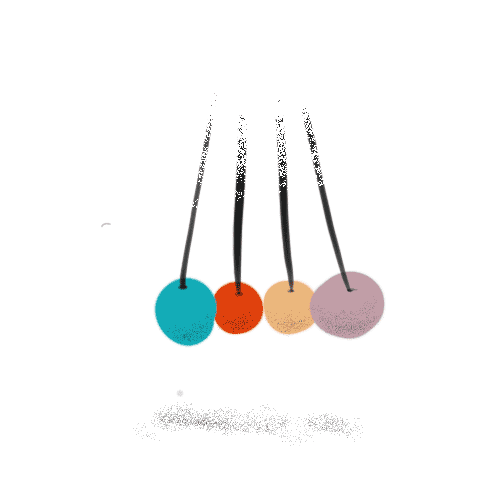5th Grade Science
Welcome to Mrs. Bernhardt's 5th Grade Science class! This webpage will be home to important class information, ISN QR code resources, assignment descriptions, and extra study and practice aids. Click on our current topic below to get started!
Visit MySA for grades and due dates.
〰️
〰️
Frequently Used Websites
2023-2024 Interactive Science Notebook Online Edition
Important Course Info
-
Read board outside classroom before class
Line up outside the classroom until you are let in. You may talk softly and get your materials ready while you wait.
Copy homework and quizzes to your planner the first class of every week.
Use the restroom signout when it doesn’t interrupt instruction.
Keep the room tidy by assisting in cleanup of desks and lab tables.
-
Every Day
ISN
Binder
Planner
Chromebook
Pencil and a good eraser (no pens or markers. All work must be done in pencil)
Notebook Paper
Some Days (I’ll notify you in advance when you’ll need these)
Headphones
Colored Pencils
Highlighter
-
You will receive two kinds of grades in this class. You will receive a traditional number and letter grade on MySA and on your report card, and you will also receive skills grades on some assignments.
Letter Grades:
Your letter grade is calculated by adding all your earned points together and dividing them by the total possible points. That will give you a decimal. Multiply that decimal by 100 to see your numerical grade out of 100.
Minor Assignment - Homework, ISN, and Classwork: Minor assignments are worth around 20 points, but they can be worth a bit more or less.
Major Assignments - Labs, Quizzes, and Projects: Major assignments can be worth 50-100 points.
Skills Grades:
You will also receive skills-based grades that can be found on almost all non-ISN assignments. You can track your skills using the skills checklists in your ISN. This will give you a better idea at which skills you are performing well in and which you might need to revisit and practice more on as you study and progress throughout the year. These skills will be be assessed using the BAM scale that you used in the lower school
Beginning: Cannot demonstrate mastery of the skill, even with the teacher’s help, or you made no attempt at the assignment. You will likely need one on one practice during study hall to improve.
Approaching: Demonstrates partial understanding, or can perform portions of the skill with assistance from another student or teacher. You are getting there but need some more practice and help.
Meeting: Meets Expectations for Skill. You are right where you need to be.
-
Late work will be accepted up to one week after the due date listed on MySA for half credit. After that, it will no longer be accepted and you will receive a 0. Exceptions can be made for illness, holidays, etc.
To redo eligible classwork and homework, simply make your corrections or redo it and turn it back in. Redos will be accepted for one week after it’s returned to you.
To reassess a quiz, come prepared to one of the scheduled reassessment times. Reassessment will take place at the very beginning of study hall, and the dates for reassessment will be listed as an assignment comment on MySA.
If you miss a quiz, a lab, or another major assignment, you must make it up at the very beginning of the first study hall you have upon returning to school.
Redos and Reassessments ALWAYS replace the original score.
Your Course Content by Main Topic and Unit
The Scientific Method
Science begins when you make observations and ask questions. By making predictions, using controlled experimentation, analyzing patterns in data, and making inferences from their observations, scientists seek to make sense of their observations and answer their questions. The Scientific Method is the tool that guides all scientific inquiry.
August -September
April-May
Properties of Matter
Matter is anything that takes up space and has mass. It makes up most of our known world and can be observed in four fundamental phases: solid, liquid, gas, and plasma. Many scientific studies involve measuring and analyzing properties of matter to look for changes and patterns in data. In this topic, we will learn why scientists use the metric system when making quantitative observations and how to measure and observe properties of matter such as length, area, volume, mass, and density!
October - December
Chemical Interactions
Matter has observable, measurable properties, but when it comes down to it, what is matter made of? If zoom in on a block of solid gold, will it keep looking like gold forever? In Chemical Interactions, we will learn what matter is made of and how matter interacts to form new substances!
January - March
Characteristics of Living Things
We are matter (and we matter) as well! We take up space and have mass. Does that mean we are made of atoms and molecules, as well? Absolutely! At what point does a molecule become living, though? What is the smallest living part of us? In this topic, we will discover the eight characteristics of all living organisms and what conditions allow organisms to survive, thrive, and adapt to their everchanging environments.
March - April
For the Sake of Science
Throughout the year, we will learn things and do some activities that don’t directly connect with our main learning goals. These things might relate to current scientific research or might tie in with holidays, seasons, or events taking place in the world. These activities will rotate throughout the year!
